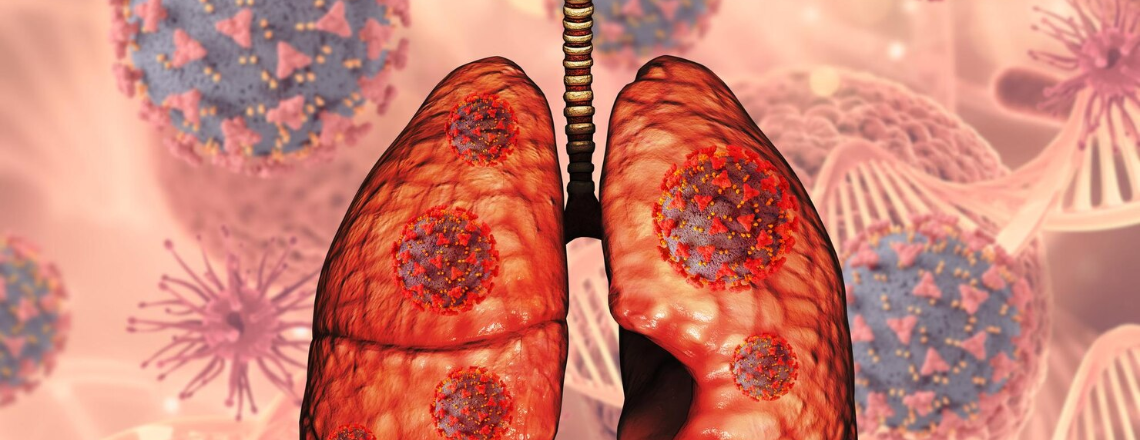Lung Cancer Screening
Published Jan. 22, 2024
By Hopkins Medtech
About Lung Cancer in the US
Lung cancer (both small cell and non-small cell) is the second most common cancer in both men and women in the United States (not counting skin cancer). Lung cancer is by far the leading cause of cancer death in the US, accounting for about 1 in 5 of all cancer deaths. The American Cancer Society’s estimates for lung cancer in the US for 2023 are:
About 238,340 new cases of lung cancer (117,550 in men and 120,790 in women)
About 127,070 deaths from lung cancer (67,160 in men and 59,910 in women)
Lung cancer mainly occurs in older people. Most people diagnosed with lung cancer are 65 or older; a very small number of people diagnosed are younger than 45. The average age of people when diagnosed is about 70.
Characteristics of Lung Cancer
Lung cancers typically start in the cells lining the bronchi and parts of the lung such as the bronchioles or alveoli.
There are two primary types of lung cancer: non-small cell lung cancer (NSCLC) and small cell lung cancer (SCLC), each with its own subtypes and characteristics.
Non-small cell lung cancer (NSCLC)
About 80% to 85% of lung cancers are NSCLC. The main subtypes of NSCLC are adenocarcinoma, squamous cell carcinoma, and large cell carcinoma. These subtypes, which start from different types of lung cells, are grouped together as NSCLC because their treatment and prognoses (outlook) are often similar.
Adenocarcinoma: Adenocarcinomas start in the cells that would normally secrete substances such as mucus.
This type of lung cancer occurs mainly in people who smoke or used to smoke, but it is also the most common type of lung cancer seen in people who don’t smoke. It is more common in women than in men, and it is more likely to occur in younger people than other types of lung cancer.
Adenocarcinoma is usually found in the outer parts of the lung and is more likely to be found before it has spread.
People with a type of adenocarcinoma called adenocarcinoma in situ (previously called bronchioloalveolar carcinoma) tend to have a better outlook than those with other types of lung cancer.
Squamous cell carcinoma: Squamous cell carcinomas start in squamous cells, which are flat cells that line the inside of the airways in the lungs. They are often linked to a history of smoking and tend to be found in the central part of the lungs, near a main airway (bronchus).
Large cell (undifferentiated) carcinoma: Large cell carcinoma can appear in any part of the lung. It tends to grow and spread quickly, which can make it harder to treat. A subtype of large cell carcinoma, known as large cell neuroendocrine carcinoma (LCNEC), is a fast-growing cancer that is very similar to small cell lung cancer.
Other subtypes: A few other subtypes of NSCLC, such as adenosquamous carcinoma and sarcomatoid carcinoma, are much less common.
Small cell lung cancer (SCLC)
About 10% to 15% of all lung cancers are SCLC. It is sometimes called oat cell cancer.
This type of lung cancer tends to grow and spread faster than NSCLC. In most people with SCLC, the cancer has already spread beyond the lungs at the time it is diagnosed. Since this cancer grows quickly, it tends to respond well to chemotherapy and radiation therapy. Unfortunately, for most people, the cancer will return at some point.
Benefits of Lung Cancer Screening
Early Detection: Identifying lung cancer at an early stage when treatment is more effective.
Reduced Mortality: Studies have shown a decrease in lung cancer mortality among high-risk individuals who undergo regular screening.
Improved Treatment Options: Early detection allows for a wider range of treatment options with better outcomes.
Screening for Lung Cancer
So far the only recommended screening test for lung cancer is low-dose computed tomography (also called a low-dose CT scan, or LDCT). LDCT scans can help find abnormal areas in the lungs that may be cancer. Research has shown that unlike chest x-rays, yearly LDCT scans to screen people at higher risk of lung cancer can save lives. For these people, getting yearly LDCT scans before symptoms start helps lower the risk of dying from lung cancer.
